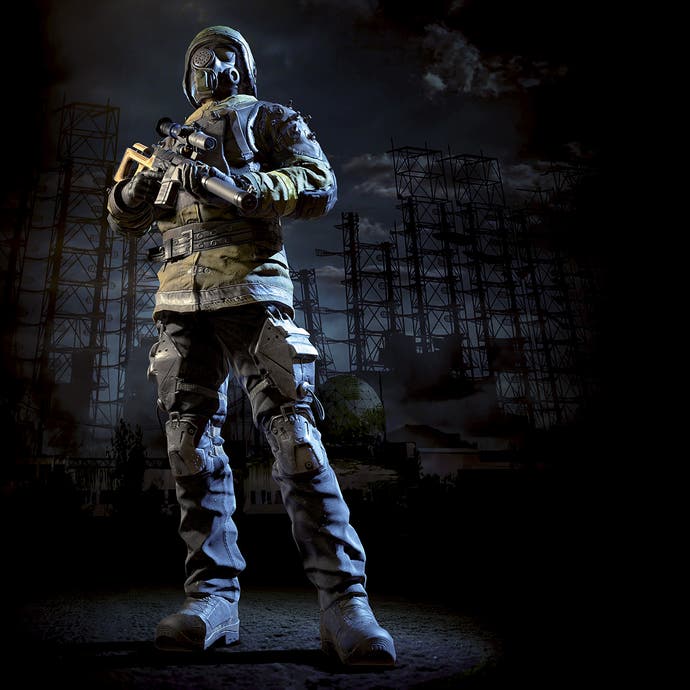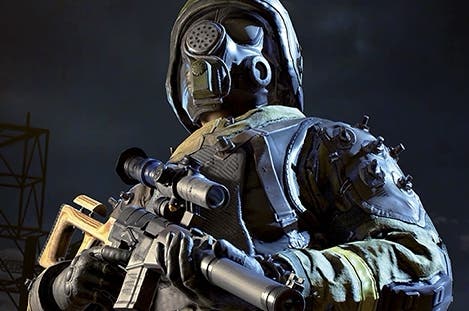Fear the Wolves turns STALKER into PUBG, spectators into weather gods
Chernobattle royale.
Few settings have captured the imaginations of game developers and players like Chernobyl, the site of a reactor explosion in 1986 that created one of the world's few actual nuclear wastelands. The legendary Exclusion Zone - now, would you believe, something of a tourist attraction - has provided the stage for countless virtual conflicts and survival stories. There are the indirect recreations, such as Big Robot's bleached starship graveyard The Signal From Tölva, or the Erangel island map from PlayerUnknown's Battlegrounds - an abandoned Soviet testing facilty in which the wanderer is forced towards rather than away from the centre by an ever-encroaching sea of blue energy. And there are truer-to-life portrayals like Call of Duty 4's "All Ghillied Up" mission or GSC World's STALKER: Shadow of Chernobyl, which gives you the run of an Exclusion Zone in which space-time is starting to fall apart like overcooked pasta.
Developed by former GSC World staff and building on the lessons of middling free-to-player shooter Survarium, Vostok's Fear the Wolves is an attempt to bring STALKER and PUBG together - a battle royale shooter that sounds like and probably is a rather opportunistic bit of genre-splicing, but which does entertain some rather exotic ideas. The project began life in September 2017, hence the current absence of screens or footage, and is slated for initial release this year on Xbox One, PS4 and PC. Developed using Unreal Engine 4, it sets you and 99 other players loose on a 25 square kilometre chunk of Chernobyl, surrounded by a radiation cloud that slowly contracts, shrinking the map. Each player starts with nothing and must scrounge weapons, protective gear, vehicles and mods such as scopes and grips in a bid to be the last person standing.
So far, so PUBG, but the devils are in the detail. Most obviously, Fear the Wolves is first-person rather than third-person, and studio co-founder Oleg Yavorski says it will aim for "more of a hardcore feel" than its primary influence, "with realistic gunfights and multiple smaller elements that players will need to master", including high-fidelity bullet physics. In itself, the relatively cramped viewpoint should oblige a more tentative approach to recon and a greater emphasis on stealth, though matches are still expected to last a fairly brisk 20-45 minutes, beginning at dawn and ending in darkness.

You'll also have to worry about AI opponents - yes, there are indeed wolves in those hills, and packs of malingering mutants to boot, though Vostok is unwilling to share specifics. These roam the map and are sometimes found guarding areas with high-value loot. They'll also flee the advancing radiation, which might prove useful if you're looking to get your hands on said loot, providing you're wearing a Hazmat suit. Where lingering outside the safe zone in order to pick off those galloping to safety was a brinkmanship tactic in PUBG, here it sounds like it'll be a sustainable strategy, with oxygen cylinders and gas masks to uncover that briefly shield you from harm.
There are also a few of STALKER's famous "anomalies", randomly occurring areas in which the laws of physics are bent to breaking point, not all of them visible. Some of these anomalies are effectively landmines, killing you on contact, so protracted off-road driving might prove unwise. Others are subtler: you might wander into a region where you take damage unless you sprint, punishing campers and forcing everybody to hot-foot it as though desperately in need of the loo. Together with the claustrophobic viewpoint, balance of human and NPC threats and more exacting approach to gunplay, it seems a recipe for some very watchable bouts of chaos.
Which brings us to the spectator options, the game's most intriguing and potentially alienating quality. Rather than passive cheerleaders and hecklers, streaming audiences in Fear the Wolves are beings of terrible collective power. You'll be able, for instance, to vote on the weather (which is otherwise dynamic) in order to change the conditions of battle - triggering a heat wave to tire players out fast, raising the windspeed to sabotage their accuracy or plunging them into fog. Less dramatically, you might be able to upvote or downvote certain players, a feature which creates an additional layer of competition on top of the pressure to survive.
Vostok is still working out how far all this will go, and is, of course, mindful of the risks of bestowing agency on an army of watching randos. Yavorski says that it won't let audiences empower individual players by, for example, gifting you weapons: it's more a question of reshaping the environment around the warring parties, aiding or hindering them invisibly, as though Chernobyl's ghosts had risen to partake in the bloodshed. It's a fascinating setup and one I'm looking forward to seeing in action, though whether it will amount to an evolution or betrayal of STALKER's lonely wilderness ethos is another question.

